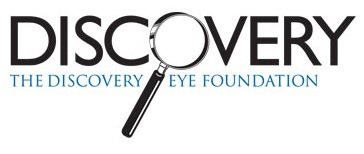The word keratoconus is formed from two Greek words: kerato, meaning cornea, and konos, meaning cone. It is pronounced ker-a-to-ko-nus.
Keratoconus (KC) is a thinning disorder of the cornea, in which the normally round, spherical shape of the cornea is distorted, and a cone-like bulge develops, resulting in visual impairment. KC is a progressive condition that usually affects both eyes, though one eye may be affected more than the other.
There have been monumental changes in what we know about keratoconus, and during the past 30 years, great strides have been made in how it is managed, says Catherine Warren, executive director of the National Keratoconus Foundation (NKCF). Three decades ago, the only options were RGP lenses and corneal transplant. Now, there are multiple contact-lens types available, advances have been made in surgical options, and with corneal crosslinking (CXL), we have a means of halting progression of the disease.
Research, Diagnosis and Treatments
The human cornea has five distinct layers: the epithelium, Bowman’s layer, the stroma, Descemet’s membrane and the endothelium. In the 1980s, we knew KC corneal stroma becomes thin, but the mechanism behind this thinning was not understood, explains Dr. M. Cristina Kenney, research director of The Discovery Eye Foundation (DEF). In the 80s and early 90s, we identified an excess of degradative enzymes that cause breakdown of the extracellular matrix of the corneal stroma. Studies have been conducted to develop inhibitors that might block the degradative enzyme activities, but to date, these have not been successful. Future studies will continue to examine the regulation of these damaging enzymes in KC corneas.
Even 30 years ago, eye-care professionals had limited instruments with which to diagnose KC, and identification of early KC was almost impossible. Now we have pachymetry instruments that quickly and reliably measure corneal thickness, automated corneal topography instruments to measure corneal curvature, and video-keratography to accurately detect KC at earlier stages, all of which mean patients can be treated earlier for KC, Kenney says.
Thanks to great advancements in research, treatment options available to KC patients have also progressed. Contact lenses are much better (learn about new contact lenses here); lasers are now used to aid in corneal transplantation procedures; and corneal crosslinking, which strengthens weak collagen fibers in the cornea and stops progression of KC not even known until 15 years ago is nearing FDA approval.
National Keratoconus Foundation
An educational program of DEF, NKCF was founded in 1986 to help those with KC better understand and cope with the condition, to increase the awareness of KC in the community, and to support researchers investigating the cause and treatment of KC.
The founders of DEF, Rita and Morris Pynoos, also founded NKCF. No one even knew what keratoconus was back then, says Rita Pynoos, whose son, Jon, has KC. It was hard to diagnose. It took us forever to even learn how to spell it.
We put this little notice in the LA Times with just the basic information: We were having a meeting at a hotel about keratoconus, with the date, time and place. We just hoped people would show up. On that day, 60-80 people came to the hotel. They came from all over; locals saw the ad and called other people they knew in other states who had the disease. And not one of them had ever met another person with keratoconus.
In Print
In 1989, NKCF published What is Keratoconus? A Reference Guide for Patients and Their Families, a booklet that explains KC and discusses treatment options. Now on its sixth edition and available in English and Spanish, this booklet has become the go-to publication for anyone learning about KC; it is the first thing many eye-care practitioners hand to their clients with a KC diagnosis. A recent recipient let us know how important the booklet has been for her:
When I was diagnosed, I was down in the dumps for awhile; it was such a shock. Reading the What is Keratoconus? booklet helped me relax. I still worry, but I’m just taking one thing at a time.
Online
The first NKCF website was launched in 1995, offering unbiased information and the opportunity to request written materials; a Spanish-language version of the site launched in 1996. Undergoing a complete revamp in 2013, the site is now available in multiple languages and is a trusted resource for patients, families and health-care professionals. Also available online are the NKCF newsletter (first published in 1995 and mailed to 628 people; a current list of more than 25,000 recipients worldwide necessitated changing to an electronic format in 2010) and monthly E-Update.
Joanne Ciesluk (read her story here), who was diagnosed with KC about 30 years ago, continually references the NKCF site:
I came across [NKCF] accidentally, as I was poking around the computer for information about keratoconus. I found the website and thought, ?There?s something out there for people like me! This is amazing. It was wonderful. It gave me something to show people in my family, so they could understand it, too. There is always something new, and I rely on the website for the educational aspect to be able to see a video of a corneal transplant, to be able to have an explanation of what the different lenses are. And I often print out things from the site to bring to my doctor and say, This is the latest and the greatest. Are you up to speed on this?
Two online support groups were started to offer patients worldwide a sense of community and the chance to interact with others who have the disease: KC-Link is an e-mail group, and KC Forum is a web-based bulletin board. (Learn more about KC-Link.)
In Person
NKCF supports research and encourages researchers to work collaboratively to discover the causes, new treatments and eventual cure of KC. Warren organizes Patient Education Seminars in cities nationwide, bringing patients together with KC experts, who offer information on treatment and research.
When NKCF marked it’s 25th anniversary in 2011, Rita Pynoos reflected on the organization’s accomplishments during the previous quarter-century: If you saw those people at that very first meeting they were scared to death, solemn, reaching out so hard to get their questions answered. They were so alone. Well, they’re not alone anymore.


